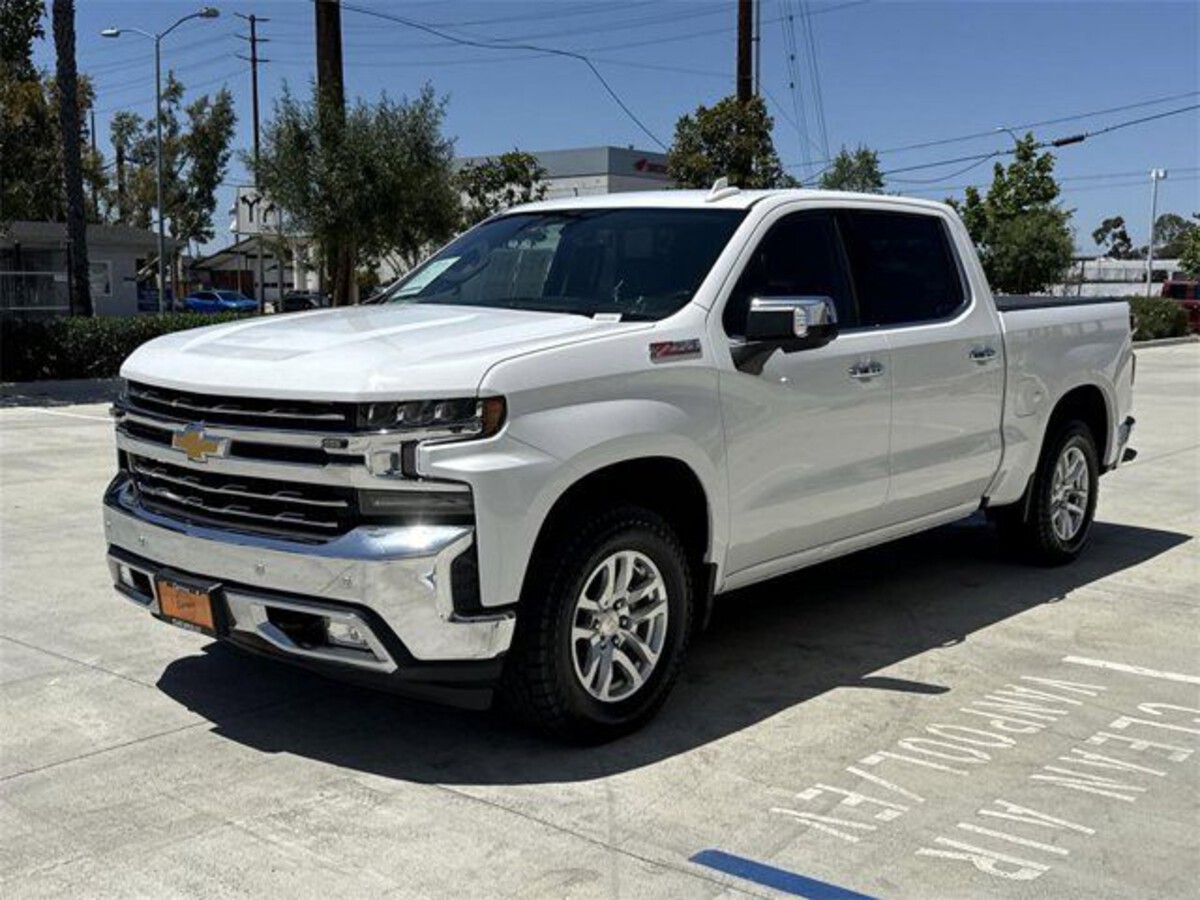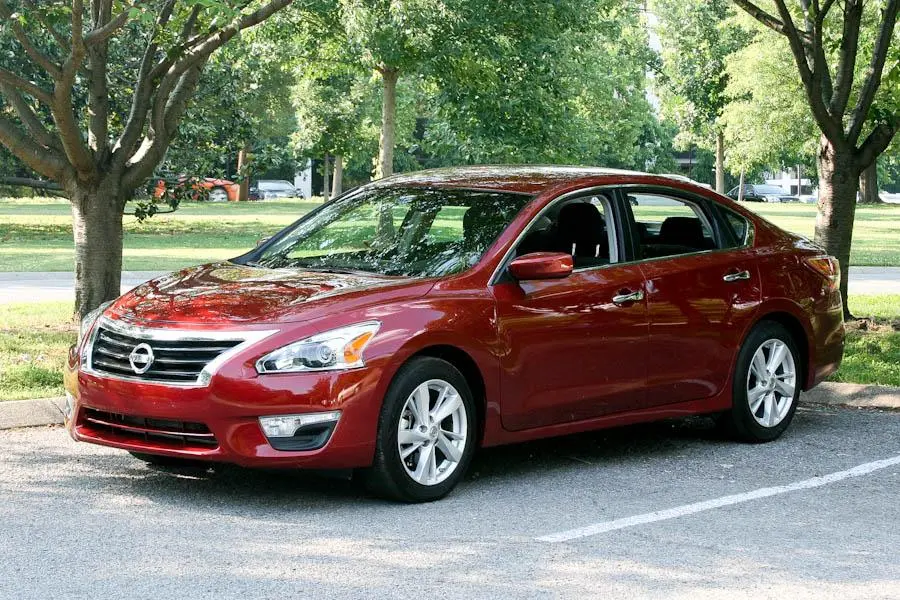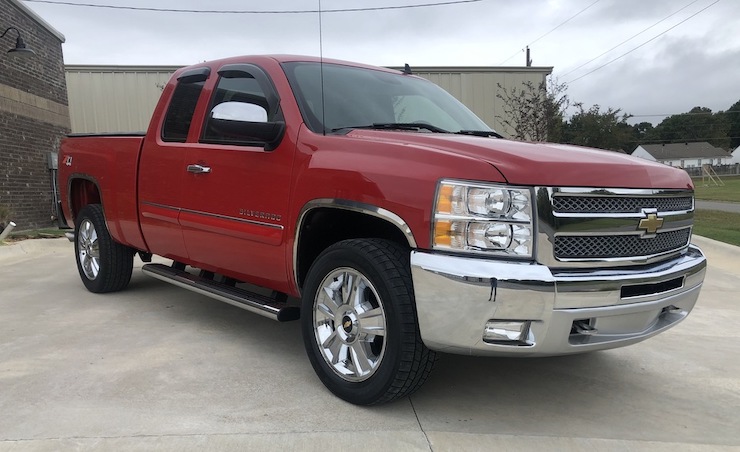When it comes to purchasing a vehicle, reliability stands as one of the most critical factors influencing consumer decisions. Beyond the allure of sleek design, powerful performance, or advanced features, the true test of a car’s quality lies in its ability to perform consistently well without frequent breakdowns or costly repairs.
One important metric often overlooked by casual buyers but highly valued by industry professionals and seasoned car owners is the presence and frequency of Technical Service Bulletins (TSBs).
These bulletins serve as official communications from automakers to dealerships, outlining specific problems identified in vehicles and recommending procedures for repairs or improvements. Essentially, TSBs are a window into the real-world reliability and maintenance history of a vehicle model.
Technical Service Bulletins differ from recalls in that they address non-safety-related issues that nonetheless impact vehicle function or owner satisfaction. While recalls must be addressed to comply with safety standards, TSBs often deal with more subtle or less critical concerns such as software glitches, premature wear of parts, or minor design flaws.
These bulletins reflect patterns of common complaints or defects reported by owners and technicians, and they provide automakers with a structured way to communicate fixes or improvements.
From a consumer standpoint, the number and nature of TSBs associated with a particular vehicle can indicate how trouble-prone that model might be and how effectively the manufacturer responds to emerging issues.
In this context, understanding which cars have the fewest TSBs—and thus tend to offer a smoother, more trouble-free ownership experience—can guide buyers seeking long-term reliability and peace of mind.
Conversely, being aware of models burdened by a backlog of TSBs can alert consumers to potential risks, costly repairs, or frequent trips to the dealership. The backlog of TSBs often suggests that a vehicle has recurring issues that are difficult to fully resolve, which might affect resale value, maintenance costs, and overall satisfaction.
This article explores two contrasting groups of vehicles. First, we examine five cars renowned for their low number of TSBs, highlighting the engineering excellence, quality control, and design philosophies that contribute to their strong reliability track records.
These vehicles typically undergo rigorous testing, employ proven technologies, and benefit from manufacturer responsiveness, resulting in fewer technical bulletins and better ownership experiences.
Second, we analyze five cars that have accumulated a backlog of TSBs, identifying common problem areas and the challenges automakers face in managing persistent issues. By delving into these case studies, readers can gain deeper insights into how TSBs impact vehicle reputation, maintenance, and owner confidence.
The vehicles chosen for this analysis span different segments—from midsize sedans and luxury SUVs to trucks and crossovers—offering a comprehensive view of reliability trends across the market. By focusing on Technical Service Bulletins rather than anecdotal reviews or broad recall data, we aim to provide an objective measure of vehicle performance post-sale.
Whether you are a prospective buyer, current owner, or automotive enthusiast, understanding the role of TSBs in vehicle reliability can empower you to make more informed decisions, plan maintenance proactively, and navigate the complexities of modern automotive technology with greater assurance.
As the automotive industry continues to innovate rapidly, incorporating advanced driver-assistance systems, electrification, and sophisticated infotainment features, the potential for technical issues may increase, making TSB data even more relevant.
This evolving landscape underscores the importance of continuous monitoring of vehicle reliability and manufacturer responsiveness. Ultimately, by exploring the cars with the fewest and most numerous TSBs, this article provides valuable guidance on which vehicles are likely to deliver dependable performance and which may require extra vigilance and care.
Also Read: Top 10 Most Reliable Used Cars You Can Buy for Under $10,000 in 2025
5 Cars with the Fewest TSBs

1. Toyota Camry
The Toyota Camry has built a legendary reputation for reliability over multiple generations, and its remarkably low number of Technical Service Bulletins (TSBs) plays a significant role in this perception. From its inception, Toyota engineered the Camry with a philosophy centered on simplicity, longevity, and quality craftsmanship.
These core principles have resulted in a vehicle that experiences relatively few widespread mechanical or electronic issues that require manufacturer-issued service guidance.
For instance, the powertrain of the Camry—particularly the four-cylinder and V6 engines paired with automatic transmissions—has been continuously refined and proven to be highly durable, translating to fewer bulletins related to engine performance or transmission failures.
Moreover, Toyota’s strict quality control measures and comprehensive testing procedures before launching a new Camry generation help minimize defects that might otherwise generate TSBs after release. Toyota conducts extensive durability tests that simulate years of wear and tear within a condensed timeframe, uncovering potential problems early in the development process.
By the time the Camry reaches dealerships, many issues have already been identified and resolved internally, thereby preventing the proliferation of post-sale bulletins. The few TSBs that do exist for the Camry are often related to minor software updates or relatively small fixes like tightening loose components or improving sensor calibration.
Additionally, Toyota’s conservative approach to adopting new technologies in the Camry helps maintain its low TSB count. While many manufacturers rush to incorporate cutting-edge infotainment systems or advanced driver-assistance features, Toyota often implements these technologies in a measured way, ensuring reliability first.
This reduces the risk of software glitches or hardware compatibility problems that can trigger TSBs. From a maintenance perspective, Camry owners benefit from this reliability with fewer unexpected visits to the dealership and lower repair costs, which enhances customer satisfaction and brand loyalty.
Finally, the low number of TSBs significantly impacts the Camry’s resale value and overall market perception. Potential buyers and used car shoppers often look for vehicles with a history of minimal service bulletins as an indicator of trouble-free ownership.
Toyota’s reputation, combined with a clean TSB record, solidifies the Camry’s position as one of the most dependable midsize sedans on the market, making it a preferred choice for both first-time buyers and seasoned drivers seeking long-term value and peace of mind.

2. Honda Accord
The Honda Accord has been a stalwart in the midsize sedan segment for decades, renowned for its blend of reliability, fuel efficiency, and driving enjoyment. One of the factors underpinning the Accord’s strong reputation is its consistently low number of Technical Service Bulletins, which reflects Honda’s commitment to robust engineering and thorough pre-production validation.
Honda’s design philosophy emphasizes mechanical simplicity, opting for straightforward, well-proven components that reduce the likelihood of complex failures requiring bulletins to address systemic issues.
An essential reason the Accord maintains a low TSB count is Honda’s continuous improvement process, where each generation builds upon lessons learned from the previous one. The company conducts extensive reliability testing, including extreme weather simulations and long-distance durability trials, to identify weaknesses before vehicles reach the customer.
When potential problems are found, Honda often incorporates fixes directly into production rather than waiting for widespread customer reports, thereby preventing the need for extensive service bulletins after launch.
Furthermore, the Accord’s engine and transmission systems are engineered with reliability and efficiency in mind. For example, Honda’s i-VTEC engines and CVT transmissions (in recent models) have undergone significant refinement to ensure smooth operation with minimal maintenance issues.
Although newer transmissions like CVTs sometimes experience initial teething problems in other brands, Honda’s meticulous calibration and quality control have kept the Accord’s TSB numbers comparatively low in this area. Honda also provides detailed technical guidance to its dealerships, allowing technicians to address minor issues effectively before they escalate into larger problems.
From the consumer perspective, this translates to an ownership experience with fewer unexpected repairs and more confidence in the vehicle’s dependability. Accord owners benefit from a vehicle that holds its value well and tends to require less intervention beyond regular maintenance.
With a low incidence of TSBs, Honda demonstrates that a carefully engineered car can offer both dynamic driving characteristics and mechanical durability, making the Accord a standout option for drivers prioritizing long-term reliability.

3. Subaru Outback
The Subaru Outback occupies a unique position in the automotive landscape, blending the utility of a crossover with the rugged capability of an all-wheel-drive system designed for a variety of road conditions. This versatility is matched by a commendable reliability record that is reflected in the relatively low number of Technical Service Bulletins issued across its production years.
Subaru’s engineering focus on its signature boxer engine layout and symmetrical all-wheel-drive system results in durable mechanical platforms that rarely produce systemic problems necessitating frequent TSBs.
One factor contributing to the Outback’s low TSB count is Subaru’s conservative approach to adopting new technologies and its focus on incremental improvements. Rather than rushing to introduce unproven systems, Subaru fine-tunes existing components to enhance reliability.
For example, while the boxer engine’s horizontally opposed cylinders offer advantages in balance and handling, Subaru has meticulously addressed issues related to head gaskets and oil consumption through design tweaks implemented early in production cycles, reducing the need for widespread service bulletins later on.
In addition to engine reliability, Subaru invests heavily in building a robust electrical and electronic architecture that supports advanced safety and driver-assistance technologies.
When TSBs are issued for the Outback, they often relate to minor software updates for these systems, such as recalibrating sensors or improving the performance of infotainment interfaces. This proactive approach allows Subaru to resolve issues efficiently without disrupting the overall ownership experience or incurring major repair expenses for customers.
Finally, Subaru’s dedicated customer service and dealer network are integral to managing TSBs effectively. Service centers are well-equipped to implement bulletins quickly, minimizing downtime.
This customer-centric approach complements the Outback’s reputation for durability and reliability, ensuring that owners can enjoy the vehicle’s versatile capabilities without frequent interruptions. For those seeking a dependable crossover with low maintenance hassles, the Subaru Outback’s limited TSB history is a compelling selling point.

4. Mazda CX-5
Mazda’s CX-5 has rapidly gained acclaim as a stylish and fun-to-drive crossover SUV that does not compromise on reliability. A significant factor behind its positive reputation is the relatively low number of Technical Service Bulletins issued since its introduction.
Mazda’s approach to engineering emphasizes simplicity, attention to detail, and careful integration of technology, which collectively minimize the frequency of issues that require manufacturer intervention through service bulletins.
One reason the CX-5 boasts a clean TSB record is Mazda’s dedication to quality manufacturing processes, including meticulous supplier selection and stringent assembly standards. This level of precision reduces the incidence of component failures and manufacturing defects that often trigger TSBs in other models.
For example, Mazda’s SKYACTIV technology—encompassing engines, transmissions, and chassis components—has been designed with reliability and efficiency as priorities, resulting in fewer technical complaints related to powertrain or drivetrain systems.
Furthermore, Mazda maintains a proactive communication channel with dealerships, enabling rapid dissemination of technical updates and repair procedures when bulletins are issued.
The relatively few TSBs associated with the CX-5 tend to involve minor software calibrations or non-critical hardware refinements, such as adjusting suspension settings to reduce noise or improving infotainment system responsiveness. These issues are generally easy to address and do not significantly affect vehicle operation or owner satisfaction.
From the perspective of the vehicle owner, the CX-5’s low TSB count translates into fewer unplanned repairs, reduced maintenance costs, and a more enjoyable driving experience. Mazda’s focus on delivering a premium feel without sacrificing reliability has made the CX-5 a popular choice among crossover buyers who want both style and substance.
The limited number of service bulletins reinforces Mazda’s emerging reputation as a brand that can deliver dependable, well-engineered vehicles in a competitive market segment.

5. Lexus RX
The Lexus RX represents the pinnacle of Toyota’s luxury brand, combining refined craftsmanship, advanced technology, and a reputation for rock-solid reliability.
One of the key reasons for the RX’s esteemed status among luxury SUVs is its remarkably low number of Technical Service Bulletins. Lexus achieves this through meticulous engineering, stringent quality control, and an unwavering commitment to delivering a flawless ownership experience.
Lexus vehicles, including the RX, benefit from Toyota’s extensive experience in producing reliable engines and transmissions, often sharing powertrain components with Toyota models but enhanced with luxury-oriented tuning and materials. This shared lineage contributes to fewer systemic issues that require TSBs.
Additionally, Lexus’s attention to interior build quality, electronics integration, and safety systems ensures that components work harmoniously, reducing the need for service bulletins related to glitches or malfunctions. The brand’s philosophy of continuous improvement means that potential problems are addressed early in the production process, and any emerging issues are swiftly communicated to dealerships.
When TSBs are issued for the RX, they typically cover minor software updates or adjustments to optimize vehicle performance and comfort. These bulletins are often preventative rather than reactive, reflecting Lexus’s focus on delivering a premium product that minimizes owner inconvenience.
For customers, this low TSB environment enhances confidence in the vehicle’s long-term durability and lowers the total cost of ownership.
Lexus owners benefit from fewer unexpected repairs and strong manufacturer support, reinforcing the RX’s reputation as one of the most dependable luxury SUVs available. The combination of luxury, reliability, and minimal technical service bulletins makes the Lexus RX a standout in its segment.
5 Cars with a Backlog of TSBs

1. Ford F-150 (Certain Model Years)
The Ford F-150 is one of the most iconic and best-selling trucks in North America, widely praised for its ruggedness and versatility. However, despite its popularity and overall strong reputation, certain model years of the F-150 have experienced a significant backlog of Technical Service Bulletins (TSBs), reflecting ongoing challenges with some mechanical and electrical systems.
For example, model years around 2015 to 2017 saw multiple bulletins addressing transmission shifting irregularities, engine stalling, and electrical glitches.
These problems often stem from the integration of newer technologies, such as advanced transmissions and sophisticated electronic controls, which while improving performance and efficiency, sometimes introduce complexity that leads to repeated service issues.
Many TSBs issued during these years focused on software updates for the transmission control module to alleviate rough or delayed shifting and to correct sensor errors. However, the need for multiple bulletins over the same issue sometimes meant that owners had to visit dealerships several times before the problem was fully resolved.
Additionally, some F-150 models experienced fuel system issues, including fuel pump failures and injector problems, that triggered further service bulletins and complicated repairs. The cumulative effect was a backlog that frustrated many truck owners, diminishing confidence in what is otherwise a highly respected nameplate.
The backlog also extended to electronic features such as infotainment systems and advanced driver-assist technologies. Owners reported issues ranging from malfunctioning touchscreens to erratic sensor behavior, which sometimes affected critical safety systems.
Because the F-150 is often equipped with many advanced options, this complexity increased the number of TSBs related to electronics and software. For buyers considering these model years, the backlog of unresolved bulletins highlighted the importance of thorough pre-purchase inspections and staying updated on manufacturer repairs to avoid costly surprises.
Ford has worked aggressively to improve the F-150’s reliability in more recent models, including redesigns and improved quality assurance. Still, the backlog during those problem years remains a reminder of how cutting-edge features can introduce unforeseen challenges.
This situation underscores the importance of balancing innovation with reliability and highlights the value of TSBs as indicators of potential ongoing issues in highly complex vehicles like the F-150.

2. Jeep Grand Cherokee
The Jeep Grand Cherokee has earned a reputation for rugged off-road capability combined with upscale interior appointments, making it a favorite among SUV enthusiasts.
However, several recent model years have been burdened by a backlog of Technical Service Bulletins, primarily related to the vehicle’s drivetrain, suspension, and electronic systems. Common complaints include transmission hesitation or jerking, inconsistent four-wheel-drive engagement, and electronic glitches affecting everything from dashboard displays to advanced safety systems.
One major source of TSBs for the Grand Cherokee has been its complex transmission systems. The sophisticated 8-speed automatic transmissions introduced in some models brought improved fuel efficiency and performance, but also introduced teething problems such as rough shifting, hesitation, or sudden downshifts.
Jeep dealerships were frequently tasked with applying multiple updates and hardware replacements over successive service visits, reflecting an ongoing struggle to fully resolve these issues. This backlog of bulletins created frustration among owners who expected seamless performance from a premium SUV.
Beyond drivetrain issues, the Grand Cherokee has seen a number of TSBs related to suspension problems, including premature wear of components leading to noise, uneven tire wear, or compromised ride quality. The vehicle’s electronic systems have also been a source of frequent bulletins.
These often cover glitches in the infotainment system, malfunctioning sensors, and warning lights that activate erroneously, sometimes requiring software patches or component recalibrations. For a vehicle positioned as a luxury off-road blend, these recurring issues have somewhat tarnished its reputation.
Jeep has made strides in addressing these problems, but the lingering backlog of TSBs means that potential buyers should research specific model years carefully. For current owners, awareness of open bulletins and ensuring timely updates is essential to maintaining vehicle performance and safety.
The Jeep Grand Cherokee’s backlog of TSBs illustrates the challenges of balancing complex technology with the rugged reliability that Jeep customers expect.

3. Chevrolet Silverado (Certain Model Years)
The Chevrolet Silverado is a cornerstone in the American full-size truck market, valued for its capability and versatility. However, similar to its competitors, certain model years of the Silverado have accumulated a backlog of Technical Service Bulletins that point to ongoing technical challenges.
Notably, models from around 2014 to 2018 have exhibited issues with transmissions, cooling systems, and electrical components, which have collectively driven up the number of service bulletins issued by General Motors.
Transmission issues represent one of the most frequent causes of TSBs in these Silverados. Owners have reported symptoms such as harsh shifting, delayed engagement, and occasional loss of power delivery. These problems often relate to software glitches in the transmission control modules or mechanical faults in the valve bodies.
GM issued multiple bulletins instructing dealerships to update transmission software and, in some cases, replace mechanical components. Unfortunately, the persistence of these issues meant that some owners needed several visits before receiving a lasting fix, contributing to a buildup of unresolved TSBs.
Cooling system failures, such as coolant leaks or overheating, have also generated service bulletins for certain Silverado engines. These issues can affect vehicle performance and longevity and require prompt attention to avoid engine damage.
Furthermore, electrical system faults—including problems with sensors, lighting, and infotainment controls—have added to the TSB backlog. The integration of more advanced technology and driver assistance features increases the complexity of repairs and troubleshooting, making some bulletins more challenging to resolve efficiently.
General Motors has taken measures to improve the reliability of newer Silverado models through design changes and enhanced quality controls. However, the history of TSB backlogs in certain years serves as a cautionary tale for prospective buyers and current owners alike.
It highlights the importance of staying informed about outstanding bulletins and ensuring that recommended repairs are performed promptly to maintain vehicle health and performance.

4. Nissan Altima
The Nissan Altima, a longstanding competitor in the midsize sedan market, has faced a notable backlog of Technical Service Bulletins in several recent model years, largely related to engine and transmission performance.
Despite its appeal in terms of styling and fuel economy, these mechanical concerns have affected the Altima’s reliability profile and owner satisfaction. Many of the TSBs focus on symptoms such as rough idling, stalling, hesitation during acceleration, and transmission shifting irregularities.
One of the most critical sources of TSBs for the Altima has been its variable compression turbocharged engine introduced in recent generations. While innovative and designed to boost efficiency and power, this engine has experienced teething problems, including issues with oil consumption, timing chain tensioners, and turbocharger performance.
Nissan dealerships have had to implement several technical service bulletins addressing these concerns through software updates and part replacements. Unfortunately, some of these fixes have been temporary, leading to a backlog of bulletins as further refinements are needed.
Transmission issues have also contributed significantly to the backlog. The CVT (Continuously Variable Transmission) used in many Altima models, while efficient, has been prone to complaints about juddering, delayed response, and occasional failure.
Nissan has released a series of TSBs aimed at recalibrating the transmission control software and improving component durability, but the persistence of these problems has led to increased service visits for many owners.
This backlog of TSBs can be challenging for Altima owners, as unresolved issues may result in unpredictable driving behavior and higher maintenance costs.
Prospective buyers are advised to research specific model years carefully and consider whether known bulletins have been addressed. For current owners, staying on top of service appointments and manufacturer updates is crucial to minimizing disruption and maintaining vehicle reliability.

5. Volkswagen Jetta
The Volkswagen Jetta is a compact sedan praised for its European styling and engaging driving dynamics, but it has also accumulated a backlog of Technical Service Bulletins in some model years.
Many of the bulletins address issues related to engine performance, electrical systems, and emissions components, reflecting the challenges Volkswagen has faced in balancing sophisticated technology with long-term reliability.
Engine misfires and rough running have been a common theme in Jetta TSBs, particularly in models equipped with turbocharged engines. Problems such as faulty ignition coils, spark plugs, or fuel injectors have necessitated multiple bulletins guiding dealerships on diagnostics and repairs.
Additionally, some models have experienced carbon buildup in intake valves, a known issue with direct-injection engines, which Volkswagen has addressed through service procedures and software tweaks.
Electrical system problems are another major contributor to the Jetta’s backlog of service bulletins. Owners have reported issues with malfunctioning infotainment systems, erratic dashboard displays, and warning lights that activate without clear cause. These electronic gremlins often require multiple software updates and component replacements, adding to the complexity and cost of repairs.
Volkswagen has taken steps to improve build quality and reliability in recent years, but the legacy of TSB backlogs in certain Jetta models underscores the importance of ongoing quality control. For potential buyers, this history suggests careful evaluation and consideration of service records are essential. For current owners, prompt attention to manufacturer bulletins and dealer service advice is key to managing the vehicle’s performance and avoiding unexpected failures.
Also Read: 10 Cars with Legendary V8 Engines That Refuse to Die
The landscape of vehicle reliability is complex and nuanced, with a multitude of factors influencing how well a car performs over time and how frequently it requires technical intervention. Through examining the number and nature of Technical Service Bulletins, we gain critical insight into the hidden realities behind the showroom gloss and marketing promises.
This article has highlighted two distinct categories of vehicles: those with remarkably few TSBs, signaling strong engineering and dependable performance, and those burdened with a backlog of bulletins, reflecting persistent challenges and recurring issues that can complicate ownership.
Cars with few TSBs, such as the Toyota Camry, Honda Accord, Subaru Outback, Mazda CX-5, and Lexus RX, represent benchmarks in reliability. These vehicles benefit from thorough design processes, rigorous testing, and a deliberate approach to adopting new technologies.
Their relatively clean TSB records speak volumes about the manufacturers’ commitment to quality and customer satisfaction. Owners of these models can generally expect fewer unexpected repairs, lower maintenance costs, and a more consistent driving experience.
This reliability translates into enhanced resale values and solid brand reputations that drive consumer trust and loyalty. These vehicles demonstrate that, despite rapid technological advancements, it remains possible to build cars that stand the test of time without excessive technical intervention.
Conversely, vehicles like certain model years of the Ford F-150, Jeep Grand Cherokee, Chevrolet Silverado, Nissan Altima, and Volkswagen Jetta show how innovation and complexity can sometimes come at the cost of reliability. The backlog of TSBs in these models highlights the challenges manufacturers face when integrating new technologies, complex powertrains, and advanced electronics.
Issues with transmissions, engine performance, electronic systems, and drivetrain components have led to repeated service bulletins, requiring multiple visits to dealerships and sometimes prolonged frustration for owners. These backlogs underscore the importance of continuous quality improvement and the critical role of manufacturer support in resolving ongoing problems.
For consumers, understanding the presence and impact of TSBs is invaluable. It allows buyers to evaluate vehicles not only on initial appeal but on long-term ownership experience. Prospective owners should consider TSB data alongside other factors such as warranty coverage, manufacturer reputation, and customer reviews when making purchasing decisions.
For current owners, staying informed about available service bulletins and promptly addressing recommended repairs can mitigate the risks associated with technical problems and extend the vehicle’s lifespan.
Looking ahead, as vehicles become increasingly sophisticated with electrification, autonomous features, and interconnected systems, the potential for technical issues—and consequently, the issuance of TSBs—is likely to grow. This reality places greater importance on transparency from manufacturers and diligent communication with consumers.
It also calls for ongoing investment in quality assurance, testing, and rapid problem resolution to maintain the balance between innovation and reliability. Ultimately, the story of Technical Service Bulletins is a reflection of the evolving automotive industry. It illustrates the delicate interplay between cutting-edge technology, engineering excellence, and real-world performance.
By learning from the experiences of vehicles with both few and many TSBs, consumers and manufacturers alike can foster a marketplace where reliability and innovation coexist harmoniously. This informed perspective empowers buyers to choose vehicles that meet their needs not just today, but for many years of dependable service on the road ahead.

